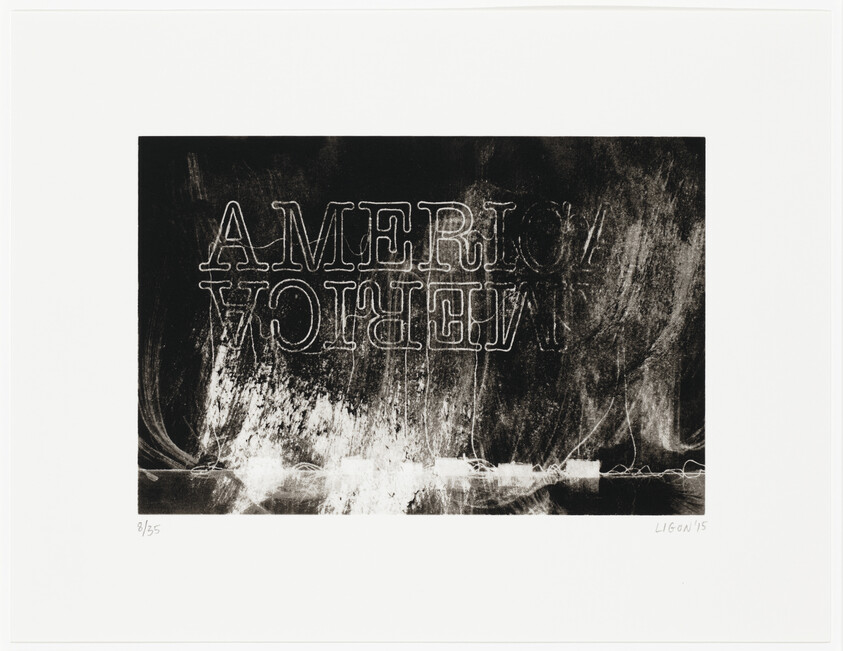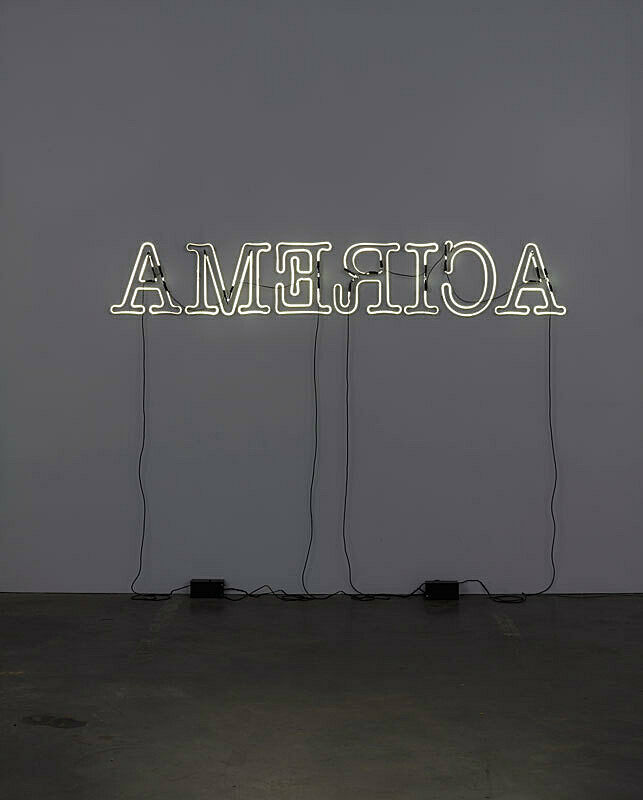Vlog: Glenn Ligon: AMERICA
Apr 15, 2013
In this video blog (or, "vlog"), artist and Whitney educator Christine S. Kim discusses artist Glenn Ligon's unique ;perspective and artistic process in American Sign Language, focusing on selected works in the retrospective exhibition
Glenn Ligon: AMERICA
Glenn Ligon is a New York artist who has had a close relationship with the Whitney Museum since 1985. This exhibition is his first mid-career retrospective, presenting an analysis of American history, literature, and society from a perspective that is not only American, but also black, masculine, political, and homosexual.
Glenn Ligon is well known for his text-based conceptual paintings. He often borrows quotes from a variety of historical figures and some of the quotes are his own. This is his way of inhabiting a different voice or identity, as if wearing many different hats. He uses stencils, rather than hand-written forms of text--this establishes a boundary and keeps the work from becoming autobiographical.
Ligon uses black oil stick to create these works, rubbing each letter of the stencil, performing this action over and over again. The repetition creates an abstract piece, a space with a loss of self, a loss of meaning. Yet ironically, at the same time, it increases our awareness of an African-American perspective.
This work is entitled, "Notes on the Margin on the Black Book". It was made in response to a work by Robert Mapplethorpe, a famous photographer who published a book in 1986 entitled "The Black Book". There was great controversy when this book was released, a culture clash. In turn, people had many different responses to and opinions about the book. The book contained 91 pictures of mostly nude black men. When Ligon leafed through it, his first response was one of awe and shock. The image of a black man as a beautiful subject was unusual at that time; the black male was usually excluded here. Ligon felt this could be considered high art--it was classically beautiful, yet at the same time, it engendered mixed feelings, encouraging stereotypes, fetishes, and eroticism. Ligon asked himself, "Are these photos racist?" He then realized that this question was too limiting. This book was much more complicated than that. Ligon collected notes, opinions, and quotes that had been expressed at that time, cutting selections out from different newspapers and magazines. He pieced together the ones he chose, creating a work that combines both text and images. You can see some examples here.
In the year 2000, the Walker Art Center invited Ligon to give a workshop. He decided to use coloring books from the 1960's and 70's that were create with black children in mind specifically, in an effort to encourage pride in their culture and identity. The coloring books contained images of individuals such as Malcolm X, Harriet Tubman, and Frederick Douglass. They were given out to children of varying ages, races, and generations at the Walker, some of whom were not aware of who these historical characters were as they were coloring. They innocently colored them in with a variety of different colors. One child, upon seeing the picture of Malcolm X, asked Glenn Ligon if it was him. Apparently they wore the same type of eyeglasses. This shows how over time icons can change-- Things can easily be forgotten or misunderstood. The idea of power is extremely complicated, and we often need to re-learn and re-create it.
Glenn Ligon uses neon signs to show how the color black can be used to create light. For example, here behind me on the wall black paint has been used. The paint covers places where the light should shine through and project outwards, but instead it is reflected back to the wall. This work was created the same year Obama was voted into office as President. America was excited and full of optimism, yet at the same time a war was going on, the economy was nose-diving, and people were feeling a lot of anxiety, a clash of emotions. It is a similar concept to that of an eclipse with a glow coming from behind.
Here the word America looks like it has been flipped backwards yet actually each individual letter has been turned. Ironically, the letters A, M, I, and A look the same either way, yet the rotation of the letters E, R, and C throw the viewer off and cause confusion.
This suggests the fragility of America. Is our future one of taking steps forward or taking steps back? And are we looking forward or looking back, in terms of black and white?
This show portrays Ligon's strong use of investigation, analysis, and contemplation, instead of making statements. Nothing has been firmly decided or set in stone. The title, "America", lets us know that this show speaks for everyone.
I'm Christine Kim, thank you for watching.


